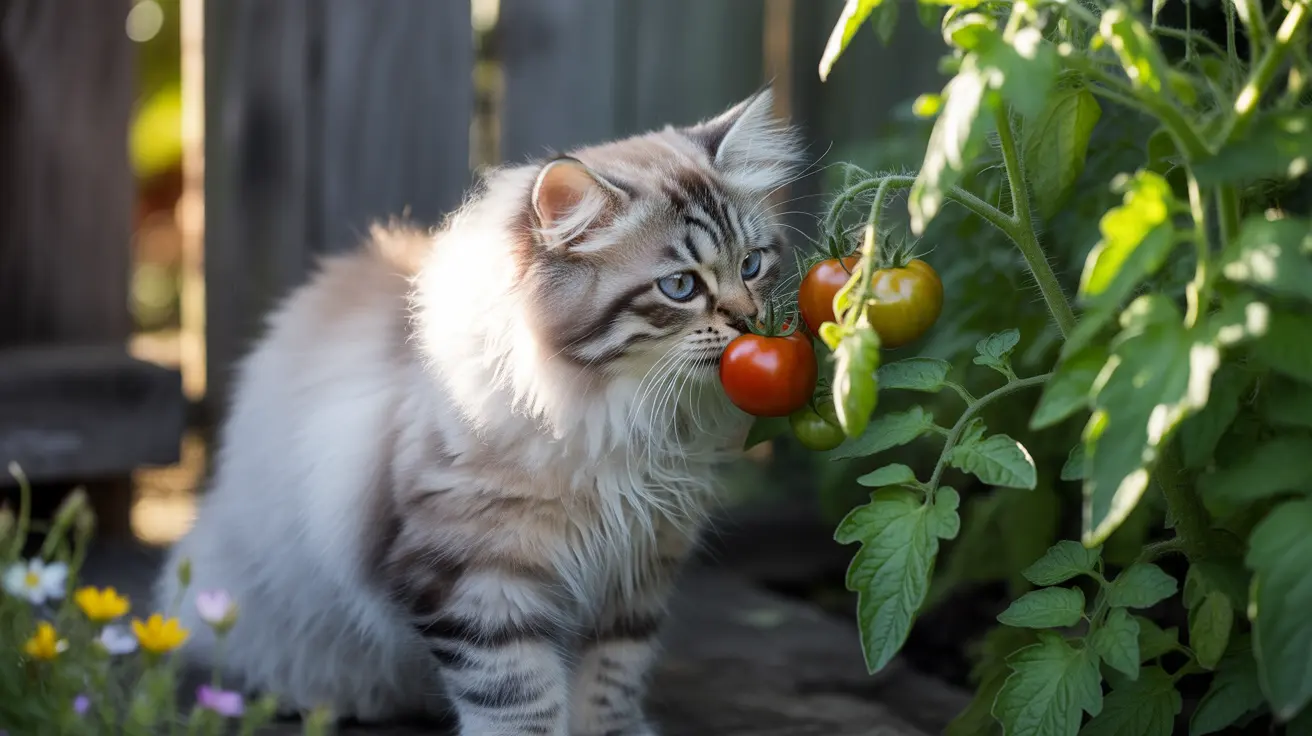As a cat owner, knowing which plants pose a threat to your feline friend is crucial for their safety. Tomato plants, while common in gardens and homes, can indeed be toxic to cats. Understanding the risks and knowing which parts of the plant are dangerous could potentially save your cat's life.
In this comprehensive guide, we'll explore the dangers of tomato plants to cats, identify toxic components, and provide essential information about symptoms and treatment. We'll also share practical prevention tips to keep your curious feline companion safe.
Understanding Tomato Plant Toxicity
Tomato plants belong to the nightshade family (Solanaceae), which contains several toxic compounds. The most dangerous parts of the tomato plant for cats are the leaves, stems, and unripe (green) tomatoes. These parts contain solanine and other glycoalkaloids that can cause poisoning when ingested.
Interestingly, ripe tomato fruits contain minimal amounts of these compounds and are generally considered safe for cats, though they offer little nutritional value for our feline friends.
Dangerous Parts of the Tomato Plant
Leaves and Stems
The leaves and stems contain the highest concentration of toxic compounds. Even small amounts can cause adverse reactions in cats. These parts should always be kept out of your cat's reach.
Unripe Tomatoes
Green, unripe tomatoes also contain significant levels of solanine and should be considered dangerous to cats. As tomatoes ripen and turn red, the toxicity levels decrease substantially.
Signs of Tomato Plant Poisoning in Cats
If your cat has ingested parts of a tomato plant, watch for these common symptoms:
- Excessive drooling
- Severe gastrointestinal upset (vomiting and diarrhea)
- Loss of appetite
- Depression and lethargy
- Confusion or behavioral changes
- Dilated pupils
- Slow heart rate
- Physical weakness
Immediate Actions and Treatment
If you suspect your cat has eaten any part of a tomato plant, take these steps immediately:
- Remove any remaining plant material from your cat's reach
- Look for signs of chewing or ingestion
- Contact your veterinarian or pet poison control immediately
- Monitor your cat's symptoms and behavior
- Follow professional medical advice for treatment
Prevention and Safety Measures
Protecting your cat from tomato plant poisoning is relatively straightforward with these preventive measures:
- Keep tomato plants in areas your cat cannot access
- Use physical barriers around garden plants
- Consider growing tomatoes in a separate, enclosed area
- Remove fallen leaves and stems promptly
- Choose pet-safe alternatives for indoor plants
Frequently Asked Questions
Are tomato plants toxic to cats, and which parts of the plant are dangerous?
Yes, tomato plants are toxic to cats. The leaves, stems, and unripe (green) tomatoes contain dangerous compounds like solanine. Ripe tomato fruits are generally safe but offer little nutritional value for cats.
What symptoms should I watch for if my cat eats tomato plant leaves or stems?
Watch for excessive drooling, vomiting, diarrhea, lethargy, confusion, dilated pupils, and decreased heart rate. These symptoms typically appear within a few hours of ingestion.
Is it safe for cats to eat ripe tomatoes, or should all tomato products be avoided?
Ripe tomatoes are generally safe for cats in small amounts, but they provide no nutritional benefit. It's best to avoid feeding tomatoes to cats altogether to prevent any potential issues.
What immediate steps should I take if my cat has ingested parts of a tomato plant?
Contact your veterinarian or pet poison control immediately, remove any remaining plant material, and monitor your cat's symptoms. Save any plant material for identification if needed.
How can I prevent my cat from getting poisoned by tomato plants at home or in the garden?
Create physical barriers around tomato plants, keep indoor plants out of reach, and promptly clean up garden debris. Consider growing tomatoes in enclosed spaces or choosing pet-safe alternatives for indoor plants.
By understanding the risks of tomato plants and implementing proper safety measures, you can protect your cat while still enjoying your garden. Remember that prevention is always better than treatment, and when in doubt, consult with your veterinarian for guidance specific to your cat's situation.






